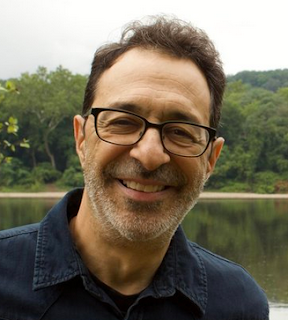Heinz Insu Fenkl is the author of the new novel Skull Water. He also has written the novel Memories of My Ghost Brother. Fenkl teaches at the State University of New York, New Paltz. He grew up in Korea, Germany, and the U.S., and he lives in the Hudson Valley of New York.
Q: In a 2016 interview in The New Yorker, you said, “The Insu in the story is myself as a boy,” adding that you were dealing with “the often conflicting layers of my identity as the son of a Korean mother and a German-American father.” Can you say more about that, and about what specifically inspired you to write Skull Water?
A: Skull Water was originally meant to be a memoir, so initially, the reason was to write about important themes and experiences that came from my life: being of mixed-race; being marginalized, bullied, and discriminated against; living between U.S. Army bases and the Korean camp towns; surviving with no parental supervision because our GI fathers were away from home most of the time (sometimes in Vietnam) and our mothers were busy dealing on the black market; how we were exploited; how we formed our own support systems; the culture of Army brats; the daily danger in our lives, which we were oblivious to, but which is quite alarming in retrospect.
I also wanted to capture a time and place that no longer exists because it hasn’t been adequately documented. The life in camp towns in the 1970s in South Korea, under the rule of the military dictator Park Chung-hee, isn’t exactly a popular subject even in Korean literature. A lot of what I wanted to do was document that lost history for Koreans and for Americans who might have served there. The two major American military bases in Korea (ASCOM and Yongsan Garrison) are now mostly shut down.
Q: How was the novel's title chosen, and what does it signify for you?
A: Skull water is the fluid that is said to accumulate in the human skull after death. According to a Taoist folk belief, it can cure any human ailment.
In the novel, the main character Insu and his friends set out to rob a grave to get skull water for Insu’s uncle, who is suffering from a mysterious foot injury that never seems to heal. Insu’s uncle, Big Uncle, is dying as the infection in his foot grows more serious, so there is urgency to the grave-robbing quest, which has unexpected consequences.
Skull water also seems to be a reference to cerebrospinal fluid, the medium through which neurochemical processes in the brain occur, which means it’s the medium of human consciousness. Insu learns from a Buddhist monk about a Buddhist master from ancient times, Wonhyo, who became enlightened after drinking water from a skull.
Q: The writer Marie Myung-Ok Lee called the book “A magical, brutal novel that shines light into a little-known world of a modernizing Korea of the 1970s with its vestiges of American occupation, along with the mysteries of ancestors and the hungry ghosts of worlds we cannot see.” What do you think of that description?
A: Marie is a very perceptive reader, and she has known my work for a long time. She also touches on some of those same themes in her own remarkable novel, The Evening Hero, which came out last year with Simon & Schuster. Her description of my novel is amazingly concise, when I think about it, and it accounts for the setting, the plot, and the themes of Skull Water very accurately.
Q: What do you hope readers take away from the book?
A: It’s hard to reduce the themes of the novel to a few main messages, but a lot of the novel is about the conflict between intention and outcome. The world can be a terrible place, and good intentions don’t always produce the intended results, and yet we still have to live with compassion, sympathy, and understanding as we try to do what we believe is right and good. What helps us with this difficult task, even when families are so dysfunctional, is the loyalty and devotion of our friends.
Q: What are you working on now?
A: One of the things I’m working on at the moment is The Monkey Puzzle Tree, a novel about my father’s experience in Vietnam working as a military advisor with the Montagnard tribespeople, the Hmong, in the highlands just before the Tet Offensive.
It will be unlike most novels about the Vietnam War because it shows the daily lives and the culture of the Hmong along with my father’s unique perspective as a German survivor of World War II and its aftermath, including the expulsion of Germans from Czechoslovakia.
There are lots of unexpected parallelisms between his background and the ultimate fate of the Hmong as they were exploited and then largely abandoned by the U.S. government. It’s another lost history of multiple displacements.
Q: Anything else we should know?
A: I used the I Ching, the ancient Chinese book of divination, in writing Skull Water, applying the same method Big Uncle uses in the story. That might give readers some insight into both the structure and the visual layout of the book.
I’d also like to leave readers with a bit of advice—a secret to vivid writing: first, always write by hand if possible. That engages your whole body in the act of writing in a way that typing on a computer does not.
Second, if you have to compose on a computer, do it with low ambient light and the screen off. (You may have to learn how to touch-type.) That way, you’ll be separating the act of writing from reading (which engages your impulse to judge and edit your work even in the middle of a sentence). Images are ephemeral and like dreams—if you don’t capture them quickly and nonjudgmentally, they will disappear. Trust your intuition.
--Interview with Deborah Kalb























